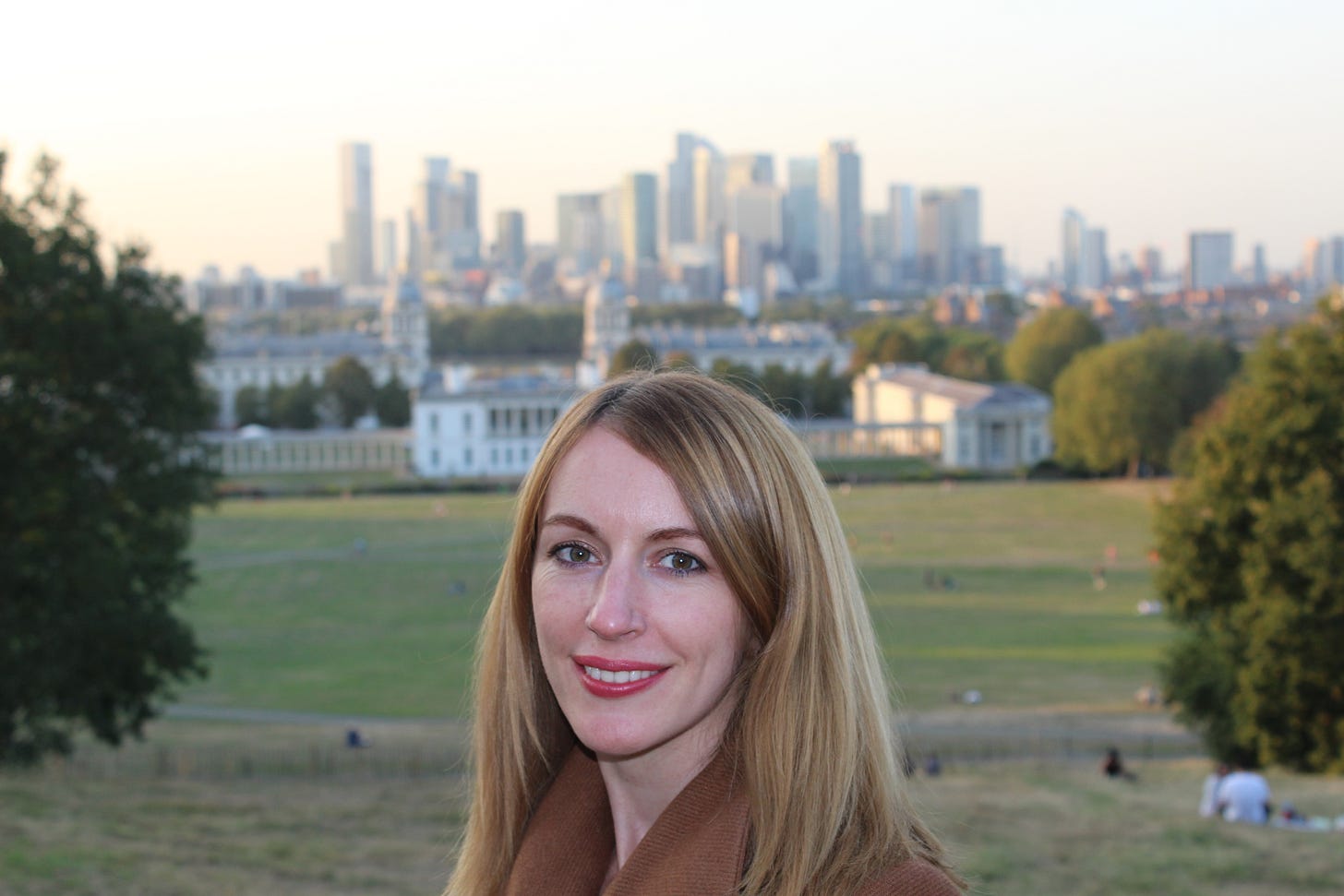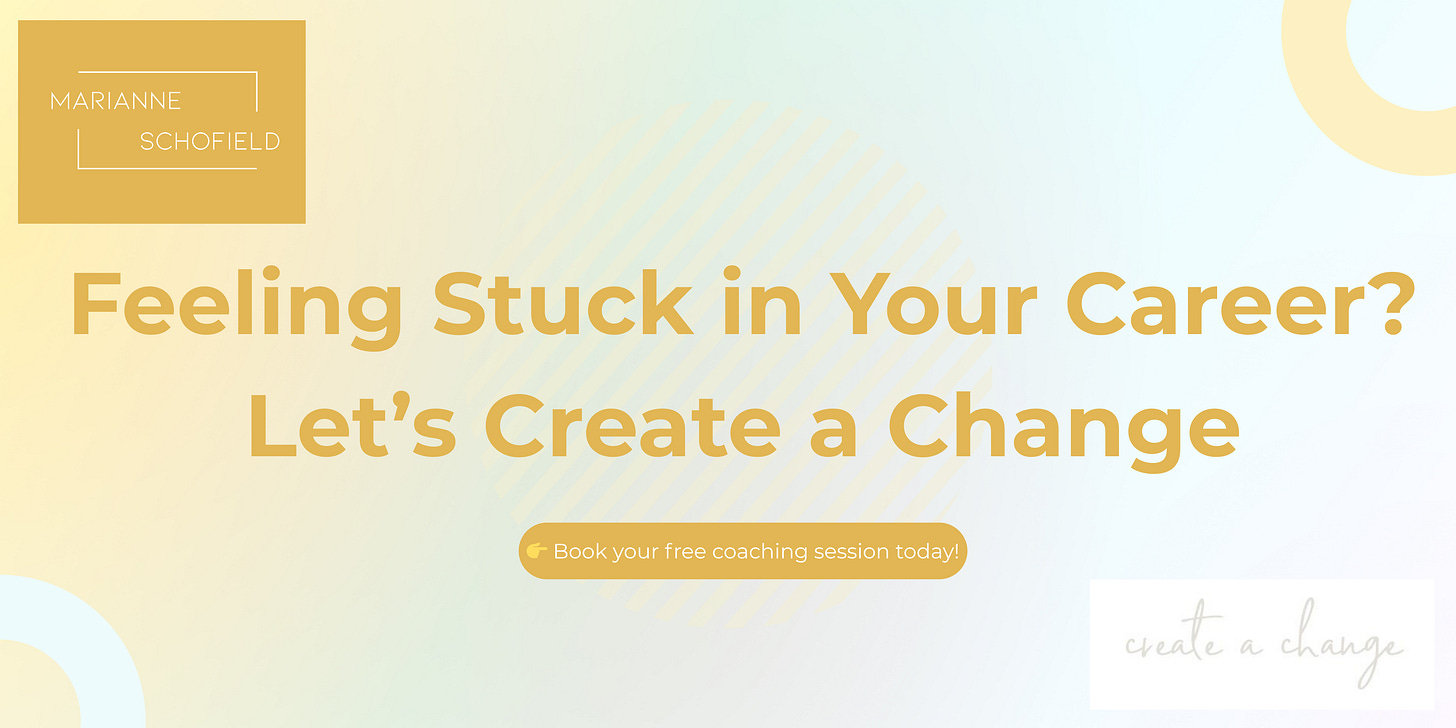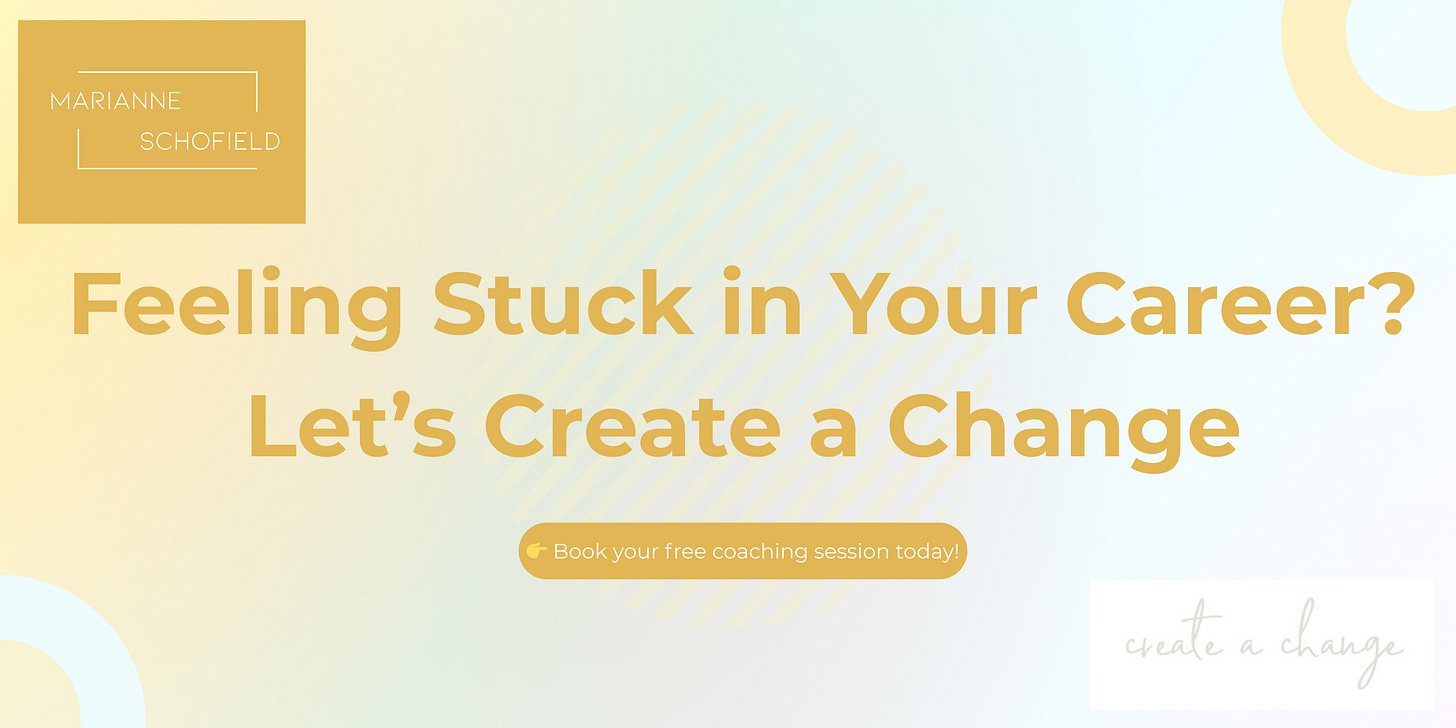Burnout, Values and Reinvention: Coaching Publishing’s Next Generation of Leaders
Marianne Schofield on what executives can learn from crisis, clarity and the courage to pivot.
Introduction: A Pivot That Mirrors Publishing’s Own
Former Bauer Media executive turned coach Marianne Schofield explains how resilience, clarity and adaptability can help publishing leaders navigate burnout, digital transformation and career transitions.
Publishing has always demanded reinvention. Print titles once powered by steady circulation revenue have been forced into digital-first experiments, often with uncertain outcomes. Executives who entered the industry expecting stability have instead found themselves navigating layoffs, restructures and shifting audience habits.
Marianne Schofield knows this world intimately. A former Bauer Media executive who helped market household names such as Heat, Closer and Grazia, she made a striking pivot in her career: leaving publishing to become a professional coach. It is a move that many in the industry would quietly admit to considering, though few act upon.
For Schofield, the transition was not only personal but also symbolic of publishing itself. “When I left, I did feel very pigeon-holed into publishing,” she recalls. “It felt like I had been in it for so long that there wasn’t really any other option. But the biggest lesson I learned is that the skills you gain in publishing are massively transferable. You just need the right support to see what those options are.”
Her journey, and the coaching practice she has built since, offers insight into how senior publishing professionals can navigate an industry in flux. From burnout and imposter syndrome to aligning personal values with corporate goals, Schofield’s reflections speak to the challenges executives face daily and the choices they must confront as publishing reinvents itself yet again.
From Bauer to Business Coach: Lessons in Resilience
Schofield’s formative years at Bauer Media left a deep impression. She began on the trade marketing side, responsible for ensuring retail visibility of Bauer’s magazines. Yet it was the company’s internal culture that proved most formative.
“I really loved working at Bauer,” she says. “They are just such an amazing, talented group of people. Every meeting you went into, you were surrounded by clever people. It taught me so much about publishing, and about the pressures that come with it. There are so many deadlines and targets many of them unachievable. You learn quickly that resilience is essential.”
Bauer also fostered a coaching culture internally, training staff to support colleagues. Schofield took part, coaching members of sales and advertising teams. “It was very much a side part of the job,” she notes. “But it sparked something in me. I realised how powerful it could be to give someone time and space to pause and reflect.”
The word resilience comes up often in conversation with Schofield, and with good reason. In her view, resilience is not about stoicism or “toughing it out” but about clarity knowing what matters, what to drop, and where to adapt. “Publishing is fast-paced,” she explains. “You need inner resilience, but also the clarity to know when change is important and when it isn’t. That clarity gives you confidence.”
Redundancy, Maternity Leave and a Leap into the Unknown
The decision to leave publishing was not straightforward. Redundancy played a part, as did maternity leave. Both came in quick succession, forcing a moment of reassessment.
“It wasn’t the market I would have chosen to launch a business in,” she admits with a wry smile. “I had just come back from maternity leave, I was made redundant, and then COVID arrived. One obstacle after another. But actually, it turned out to be invaluable. Going through it myself meant I could help others facing similar challenges.”
Setting up her own business gave Schofield credibility that many coaches lack. “There are plenty of business coaches who have never set up their own business,” she says. “I had to wear all the hats, learn everything from scratch, and survive a pandemic. It made me a better coach, because I’d lived it.”
COVID, paradoxically, was also a catalyst. “Post-COVID, people really decided to make changes,” she observes. “They didn’t want to be stuck in the same role forever. Coaching fit that moment perfectly, and Zoom made it more accessible. Suddenly, people were open to reflecting on their lives and careers in a way they hadn’t been before.”
Coaching Senior Professionals: A Space to Pause and Reflect
What distinguishes coaching from advice, in Schofield’s telling, is its emphasis on reflection rather than prescription. “The misconception is that coaching gives you the answers,” she says. “In reality, it helps you unlock your own answers. It gives you space to think about what you want, what you don’t want, and how to get there.”
For senior publishing professionals, that space is rare. Many are in constant motion, juggling editorial integrity, commercial pressures, and digital transformation. Podcasts, newsletters, video formats and AI tools crowd their remit. Yet staffing rarely expands to match the load.
“People in publishing are asked to do ten jobs at once,” Schofield notes. “What coaching provides is a pause. Instead of ploughing through a to-do list, you step back and ask: which of these things matter? What can wait? What habits or routines will help me get through this without burning out?”
She sees a recurring pattern: mid-career executives feeling “stuck” overlooked for promotion, constrained by legacy models, or uncertain whether to pivot to another sector. Her approach is practical. “We map out skills and strengths, then test them against different possibilities,” she explains. “Sometimes the result is staying in publishing with a renewed sense of purpose. Sometimes it’s a shift into an adjacent industry. The point is clarity.”
Burnout, Values and the Question of Fit
One theme emerges again and again in Schofield’s work: burnout. And she doesn’t mince her words about it.
“Almost everyone I talk to in publishing says they’re burnt out,” she says. “It’s not just occasionally tired, it’s a constant feeling of running on empty. The deadlines never end, the restructures keep coming, and now you’re expected to think about podcasts, newsletters, video, AI. The scope of the job has tripled, but the headcount hasn’t. People just keep pushing through until they’re exhausted.”
In coaching sessions, she starts by unpicking what’s behind that exhaustion. “Sometimes it’s habitual,” she explains. “The way your day is structured, the lack of boundaries, the constant email checking. Other times, it’s the environment. If your company culture is all about cost-cutting and fire-fighting, no new habit will fix that. At that point, you need to ask: is this somewhere I can thrive, or is it time to think about a bigger change?”
Values are equally central. “A lot of people feel like they’re sacrificing their values just to hit commercial targets,” she says. “Maybe they’re working with clients they don’t believe in, or pushing sales in ways that feel wrong. In coaching, we talk about values very early on. We list them out, look at which ones are non-negotiable, and see how they match with the company. If they’re miles apart, that’s going to eat away at you.”
She’s careful not to push clients into rash decisions. “I’d never say, ‘hand in your notice tomorrow,’ because people have mortgages, families, bills,” she says. “But we can explore what a long-term plan looks like. What steps would you need to take to find a role that matches your values better? Sometimes even that exploration gives people relief, because they realise they’re not trapped forever.”
Schofield describes one client who stayed in her job but stopped taking on projects that clashed with her personal ethics. “She drew a line in the sand. She said, ‘I’ll deliver on commercial goals, but I won’t do this specific type of work because it doesn’t sit right with me.’ And just having that boundary made her feel more in control. It gave her back her energy.”
In the end, she argues, burnout and values are intertwined. “If you’re constantly working against your own values, of course you’ll burn out. You’re not just tired, you’re conflicted. Coaching helps you get clarity on what matters and gives you the confidence to act on it, step by step.”
Case Studies: Stories of Reinvention
To illustrate, she shares an anonymised case. “One of my favourites was a senior publisher at a big book publisher,” she recalls. “Publishing was her identity. She was miserable but couldn’t imagine leaving. Through coaching, we mapped her strengths storytelling, project management, content expertise and explored other contexts. She eventually moved into corporate communications. She still worked with publishing clients, but in a new environment. She was much happier.”
Stories like this cut against the grain of fatalism that can pervade the industry. “The narrative is often that if you leave publishing, you can’t come back, or your skills won’t translate,” Schofield says. “That simply isn’t true. The skills are highly transferable.”
Team Coaching and Organisational Alignment
Schofield also works with teams, designing bespoke workshops for editorial, commercial and digital groups. The aim is alignment: connecting individual goals to business strategy.
“It starts with clarity,” she explains. “I work with managers to define what the business needs. Then we create space for the team to step away from day-to-day work, collaborate, and explore new ways of working. Just as one-to-one coaching provides pause and reflection for individuals, team coaching provides it for groups.”
The value, she argues, lies in structured reflection. “Publishing is so fast-paced that teams rarely pause to ask: are we pulling in the same direction? Team coaching gives them that moment, and it often leads to better collaboration and outcomes.”
Who Seeks Coaching?
Interestingly, Schofield finds that men approach her as often as women, sometimes more so. “When I started, I assumed I’d work mainly with women like me mothers in mid-career,” she admits. “But actually, it’s probably 50/50, if not more men. Perhaps men like having a female coach. Or maybe it’s just that more senior men are in roles where coaching is common. Either way, it surprised me.”
Age-wise, many of her clients are over 40. “That’s often when people feel the need for change,” she says. “Earlier in your career, you tend to plod on. After 40, you start asking: is this it? Do I want to keep doing this? That’s when coaching can be really powerful.”
The Future of Leadership in Publishing
Asked what qualities publishing leaders will need in the next five years, Schofield does not hesitate: adaptability.
“We’re in a massively changing time,” she says. “AI, digital, shifting audience habits you can’t just do what you did last year. Leaders need to pause, reflect, and be flexible. That confidence to adapt is what will keep them effective.”
Her advice to executives uncertain about the future is equally straightforward. “Only you know the answer,” she says. “Coaching can help you find it, by looking at your strengths, your values, your priorities. Publishing is still an amazing industry, but you need clarity to decide whether to stay, pivot, or leave. That’s what I love about coaching helping people see what’s possible and giving them the tools to get there.”
Conclusion: Clarity Amidst Change
Marianne Schofield’s pivot from Bauer to coaching is more than a personal story. It is a case study in how publishing professionals can reframe their careers amidst turbulence. Her emphasis on resilience, clarity, values and adaptability resonates in an industry where the only constant is change.
For publishing executives wrestling with burnout, stalled progression or ethical misalignment, her message is bracing but hopeful: the skills honed in publishing are not shackles. They are transferable assets, waiting to be redeployed. Sometimes all that is needed is the pause to see it.
Marianne has kindly offered readers of The Media Stack a free coaching session. To claim yours, simply get in touch here.






